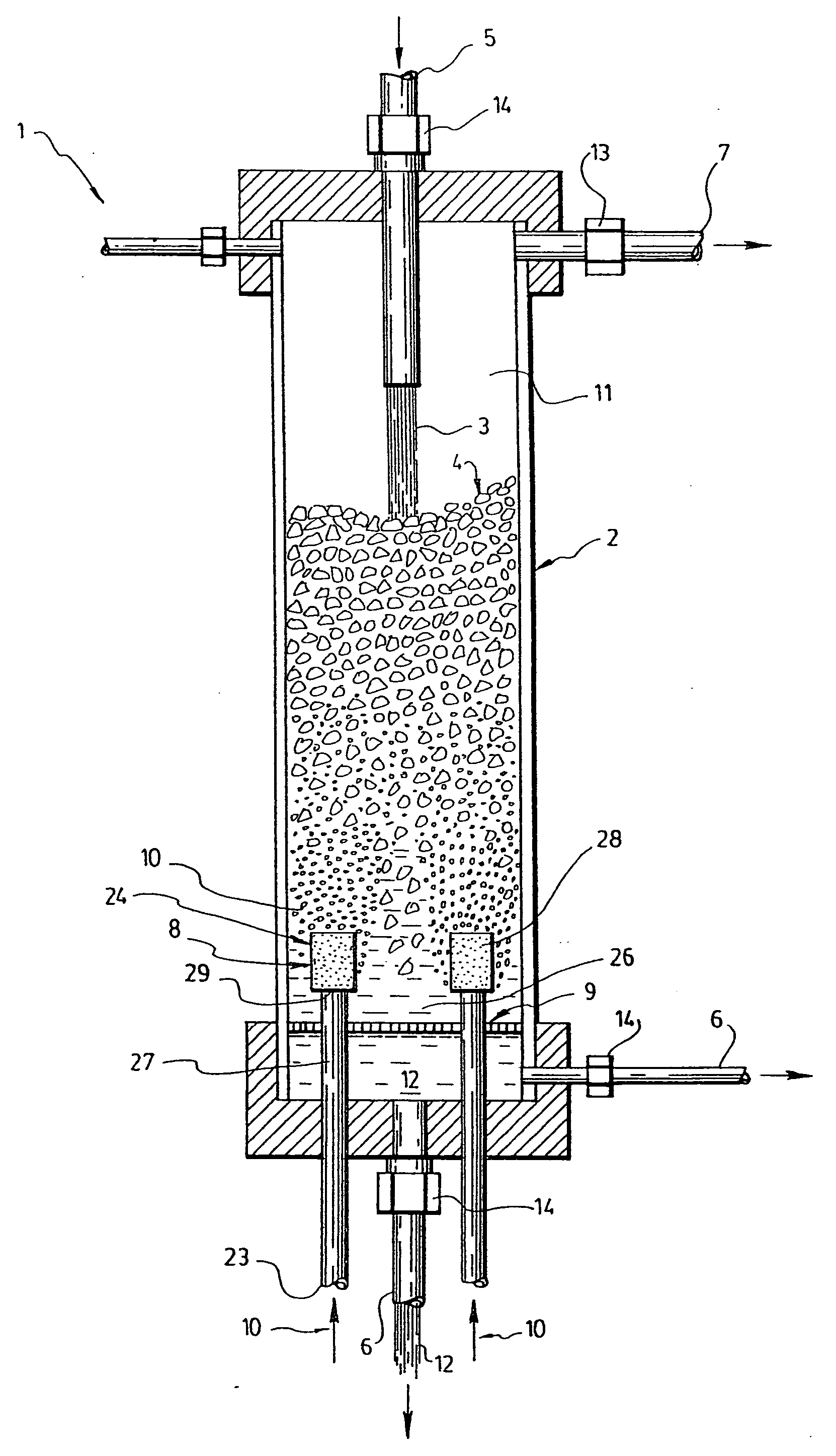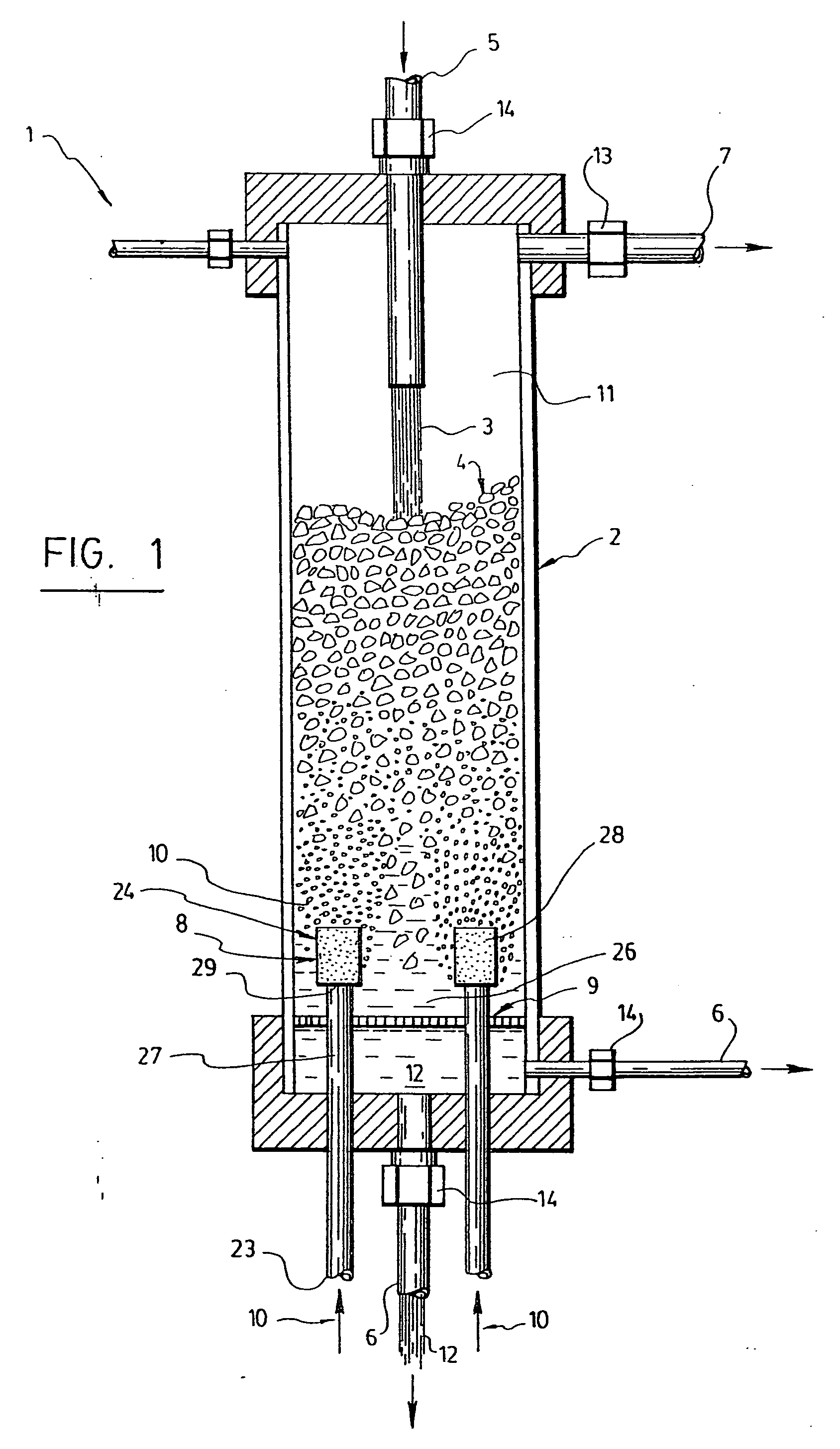Triphasic process for gas effluent treatment
a technology of gas effluent and triphasic bioreactor, which is applied in the direction of biomass after-treatment, separation processes, waste based fuel, etc., can solve the problems of difficult maintenance and upkeep, lack of versatility, and time-consuming bacterial acclimatization and response to perturbation periods
- Summary
- Abstract
- Description
- Claims
- Application Information
AI Technical Summary
Benefits of technology
Problems solved by technology
Method used
Image
Examples
Embodiment Construction
[0032] Referring to FIG. 1 or 2, the triphasic bioreactor (1) is an apparatus for physico-chemically treating a gas (10). Minimally, it features a reaction chamber (2) filled with biocatalysts (4) in suspension in a liquid (3), a liquid inlet (5) and liquid (6) and gas (7) outlets in fluid communication with the reaction chamber (2). It is worth noting that the use of the article “a” means “at least one” and hence a triphasic bioreactor according to the invention may advantageously comprise more than one reaction chamber, and / or more than one liquid and gas outlet and inlets. The liquid inlet (5) is for receiving the liquid (3) and filling the reaction chamber (2). The reaction chamber (2) is made of an appropriate material that could be glass, plastic, stainless steel, a synthetic polymer or other suitable material.
[0033] A gas bubbling means (8) and a retention device (9) are also provided. The gas bubbling means (8) is for receiving the gas (10), or gases, to be treated inside t...
PUM
| Property | Measurement | Unit |
|---|---|---|
| size | aaaaa | aaaaa |
| molecular weight | aaaaa | aaaaa |
| diameter | aaaaa | aaaaa |
Abstract
Description
Claims
Application Information
 Login to View More
Login to View More - R&D
- Intellectual Property
- Life Sciences
- Materials
- Tech Scout
- Unparalleled Data Quality
- Higher Quality Content
- 60% Fewer Hallucinations
Browse by: Latest US Patents, China's latest patents, Technical Efficacy Thesaurus, Application Domain, Technology Topic, Popular Technical Reports.
© 2025 PatSnap. All rights reserved.Legal|Privacy policy|Modern Slavery Act Transparency Statement|Sitemap|About US| Contact US: help@patsnap.com



